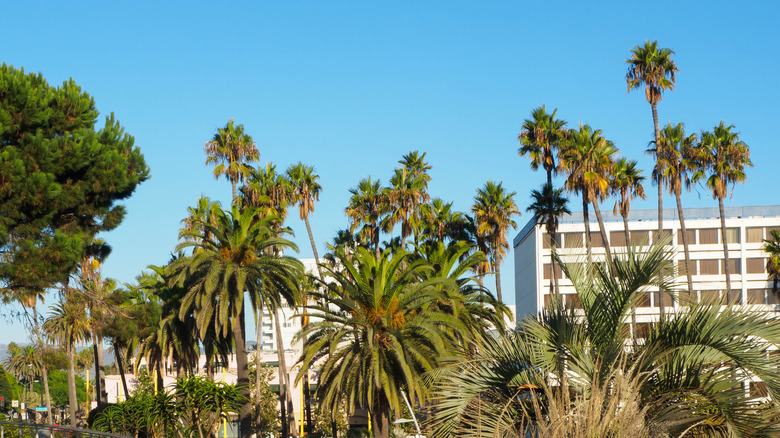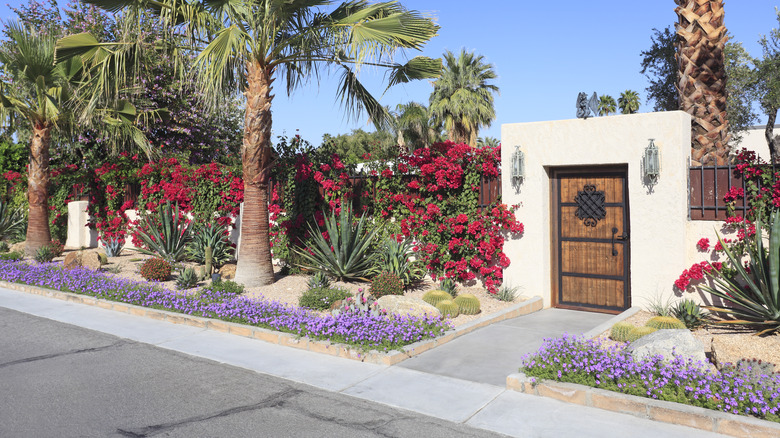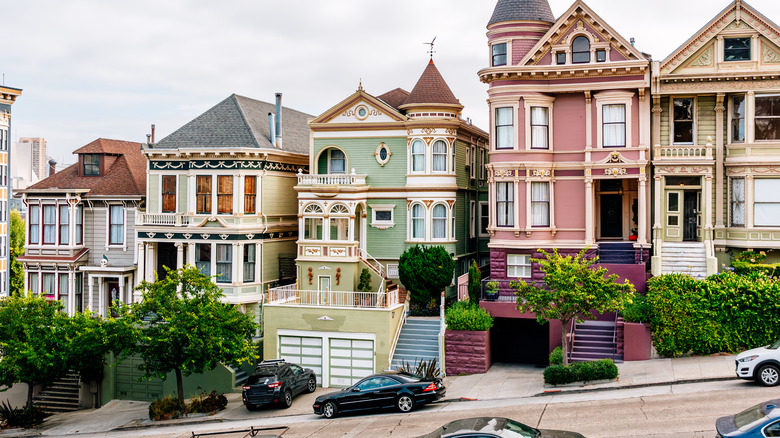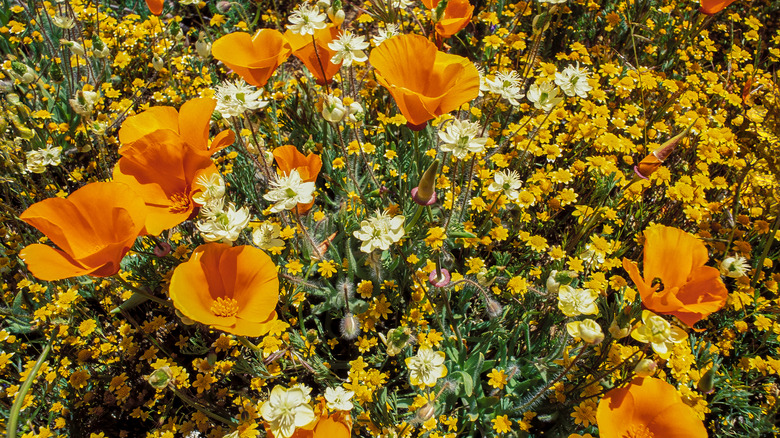Exploring California Planting Zones: Here's What To Grow Based On Your Location
California has a reputation as the land of endless sunshine and palm trees, but anyone who has lived there or visited knows that its climate and plants have far more diversity than that. The state is home to five significant climate types, and this can make it challenging to know what to grow in which parts of the state. While there are different ways to map climates, USDA Plant Hardiness Zones are based only on the minimum average temperature. Using this scale, California spans from zone 5a, where average annual minimum temperatures are between -20 and -15 Fahrenheit, to 11a, which has an average annual minimum temperature of 40 to 45 degrees Fahrenheit. While minimum annual temperatures aren't the only factor to keep in mind when deciding what to grow based on your location, they can give you a great starting point.
In addition to annual minimum temperatures, it's important to consider the water needs of plants when deciding what to grow. While many areas of California are prone to drought and scorching heat, a region's average rainfall and high temperatures aren't factored into of the USDA hardiness zones. It's also essential to keep in mind how flammable different plants are when determining what can be safely grown near your home in some particularly fire-prone areas. Additional factors, including your local soil type and whether the plants will be exposed to salt, are also important to consider.
Growing and gardening in southern California
Southern California ranges from USDA zones 8b to 11a and includes iconic cities like San Diego and Los Angeles. Much of this coastal part of the region is similar in climate to the Mediterranean, making it a perfect location to grow herbs like basil, oregano, thyme, and lavender in your garden. This is also an ideal climate for many citrus trees, including lemons and oranges. Bulbs like tulips, which require chill hours, aren't good options in much of this region due to the relatively warm winter temperatures. However, paperwhites grow well in zones 8 to 11, so you can still enjoy spring bulbs.
Of course, native plants are an essential part of a good southern California garden. Many of these plants, like prickly pears and agave, thrive with little water, making them perfect additions for gardens in this dry and drought-prone climate. In parts of the state that are vulnerable to wildfires, be sure to consider fire safety when landscaping, and try to opt for plants that aren't high in oil or resin.
Gardening in central California and the San Francisco Bay Area region
As you move up north the cost of California, average annual minimum temperatures in inland areas trend lower. While coastal San Francisco is located in zone 10a, Yosemite National Forest, located further east, is only zone 7b. Despite its warmth, San Francisco is far rainier on average than cities in more southern parts of the state, making it better suited for growing less drought-tolerant plants.
In addition to many of the same Mediterranean plants that thrive in southern California, the Bay Area is also perfect for growing species like western goldenrod and California aster. California's Central Valley is also known for its agriculture, and everything from tomatoes to grapes to fruit trees is widely grown in this region, making it the ideal area for anyone looking to start a fruit or vegetable garden.
What to grow in northern California
Northern California is a shockingly diverse region, having everything from warm and wet coastal areas to drier and warmer areas like Sacramento, to regions like Tahoe, which are famed for their snow. While redwoods may be one of the first things you think of when you consider northern California, these giants are far from the region's only beautiful plants.
Native wildflowers, like poached egg plants and California poppies, thrive in much of northern California, as does California yarrow. While these flowers grow throughout large swathes of the state, some cultivars perform best in cooler and wetter climates. In colder, more inland regions of northern California that are zone 8 or lower, you may even be able to grow bulbs that require significant chill hours, thanks to the low average winter temperatures. Vegetable garden classics, like beans and lettuce, are also good options in much of this region.



